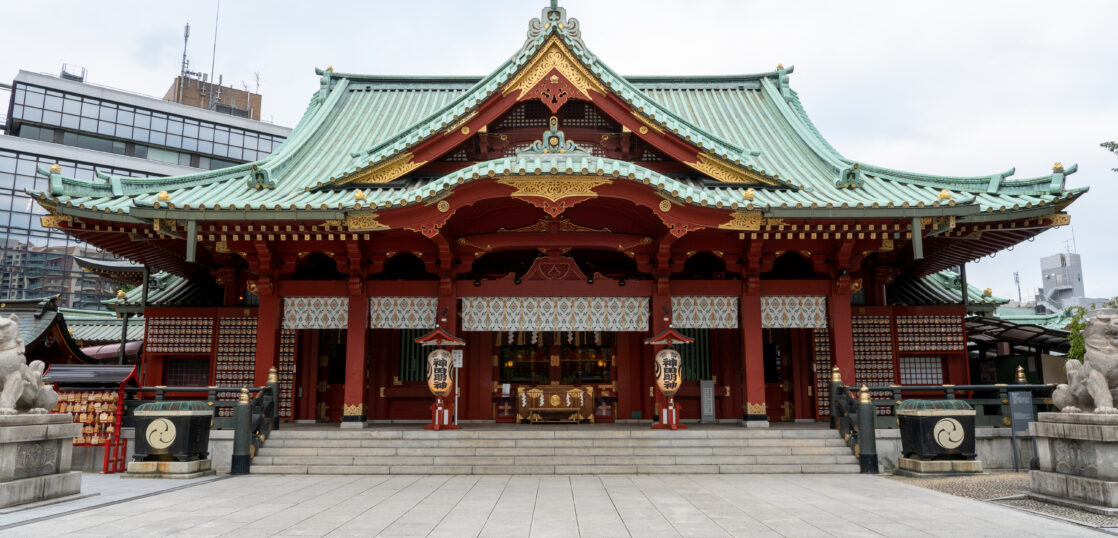Jinja (shrine) is an institution that enshrines the gods of Shinto, a religion unique to Japan.
In Japan, it is believed that by praying to the gods at shrines, one’s wishes will come true, and they are also popular as “power spots” (The meaning of places with strong spiritual energy).

Fushimi Inari Taisha (Fushimi Inari Shrine)
About Shinto
Shinto, which arose spontaneously in Japanese life, is a polytheistic religion in which all things and phenomena are believed to be inhabited by gods. These gods are collectively called “Yaoyorozu no Kami (Meaning of countless number of gods)” in Japanese.
Shinto is also characterized by the absence of a specific guru or dogma.
Some examples of deities enshrined include the sun god, the mountain god, the sea god, the thunder god, and the grain god.
In other cases, historical figures in Japanese history are enshrined as gods.
How to visit shrines and pray
Since a shrine is a sacred place, there are some manners when you visit shrines.
1. How to pass through the Torii gate
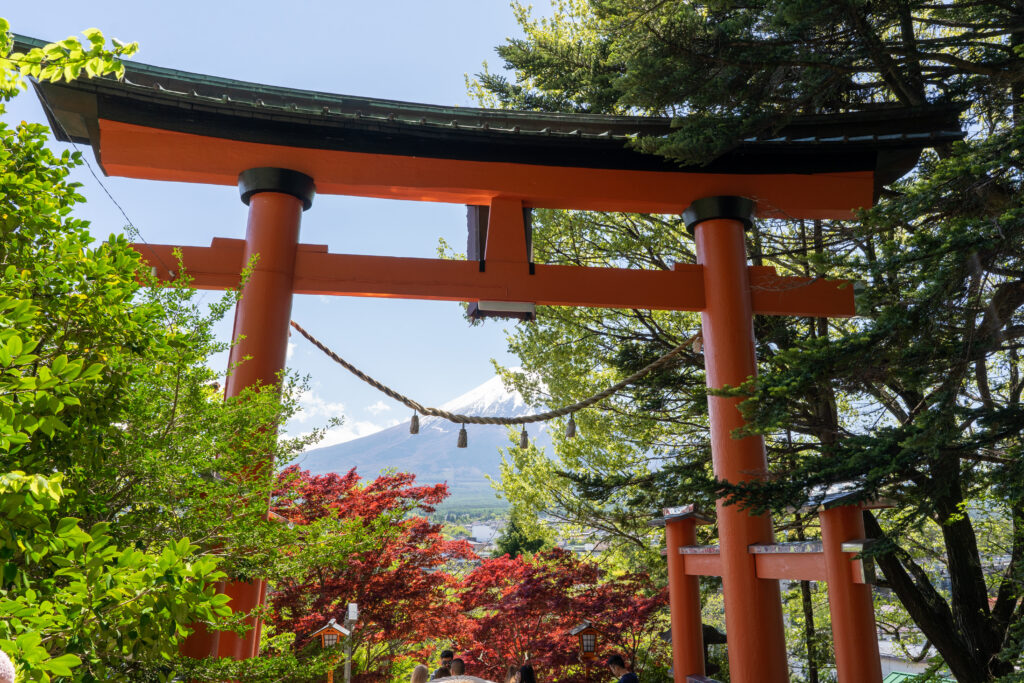
Torii gate at Arakura Fuji Sengen Jinja Shrine
The Torii, the symbolic structure of a shrine, is considered to be the boundary between the the sanctuary which the gods reside and the general society in which we live.
When passing through the Torii, it is good manners to avoid the center of the gate (the path of the deities) as a sign of respect to the deities.
It is also considered polite to bow in the direction of the shrine before passing through the torii on the way to the shrine. And after passing through the Torii gate on the way back, we also bow again in the direction of the shrine.
2. How to perform the ritual of “Temizu”
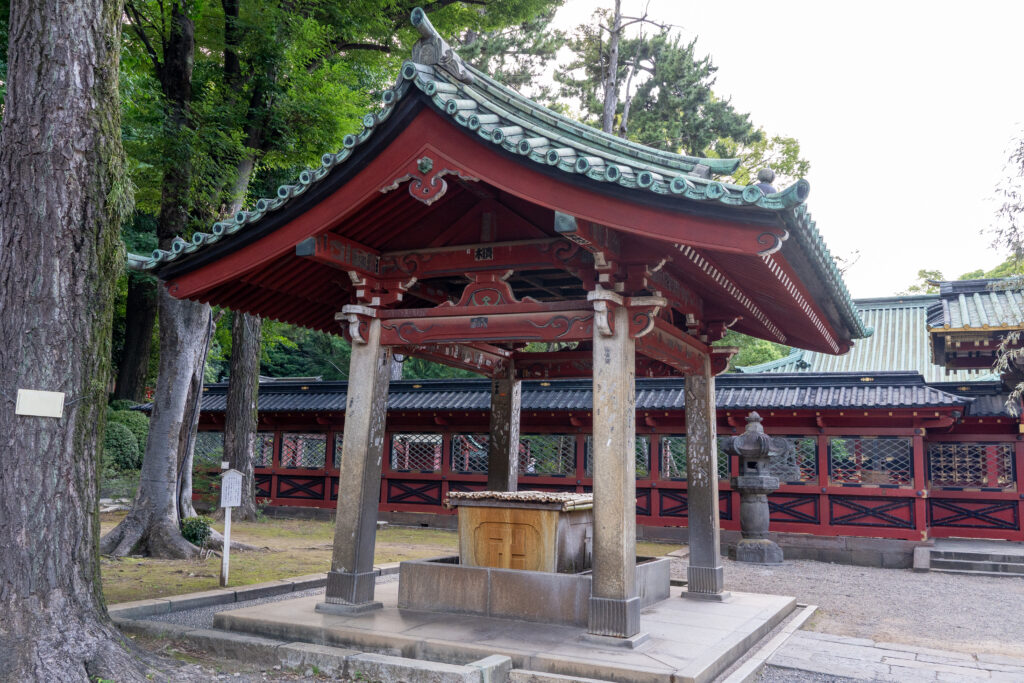
Temizuya at Nezu Shrine
Shrines and temples have small facilities called “Temizuya (or “Chozuya”)” where water flows. At the “Temizuya”, one performs the “Temizu (or Chozu)” ritual to purify the mind and body before visiting the shrine or temple.
If there is a ladle, first hold the ladle in your right hand, draw water from it, and pour water over your left hand to cleanse it. Then, switch the ladle to the left hand, and the right hand is purified in the same manner. Next, switch to the right hand, let the water pool in the palm of the left hand, take the water into the mouth, and rinse. Then, pour the water over the left hand again. Finally, set up the ladle, let the water run down the handle, and lay it down where it used to be.
If you do not have a ladle, cleanse both hands under running water, then fill both hands with water, hold the water in your mouth, and rinse. After that, cleanse your hands again with running water.
3. How to pray
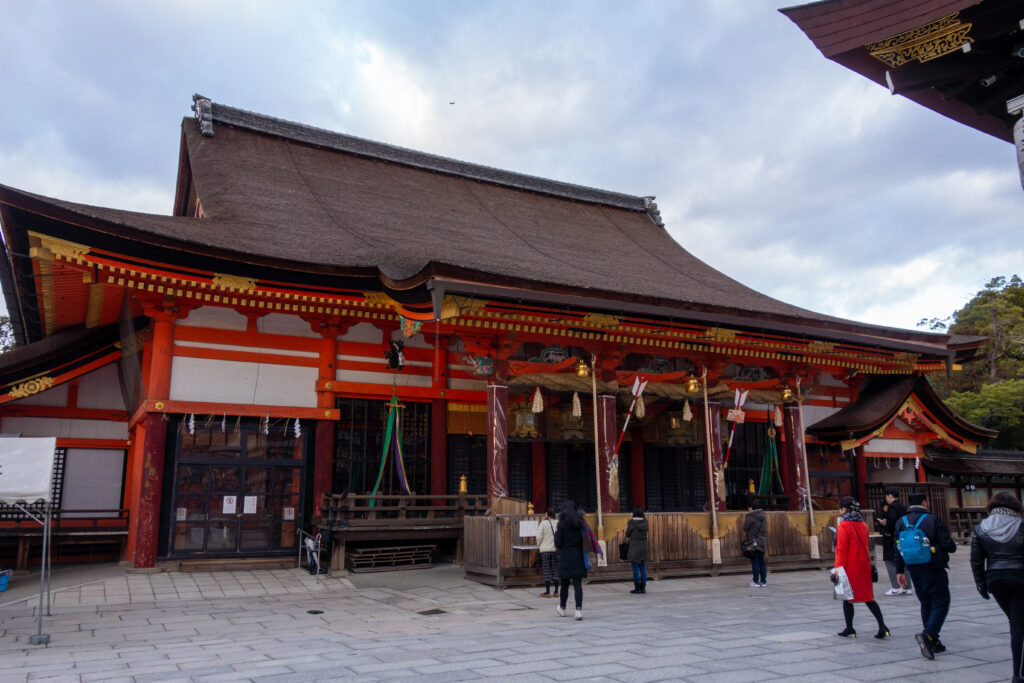
Main hall of Yasaka Shrine
In shrines, people can be seen bowing in front of the box (offertory box) in the main hall (the building where the gods reside) and the hall of worship (the building where people offer prayers to the gods), but there is a manner of worship as well, and it is considered good manners to “Bow twice, Clap twice, Bow once”.
Specifically, after standing in front of the offertory box, bowing, and placing the money in the box (if there is a bell, ring it at this time)
- Repeat a deep bow twice.
- Join both hands together (At this occasion, shift the left hand so that it is slightly up), clap your hands twice, then fold your hands together and offer a prayer.
- Finally, end the worship with a final bow.
Matsuri at shrines
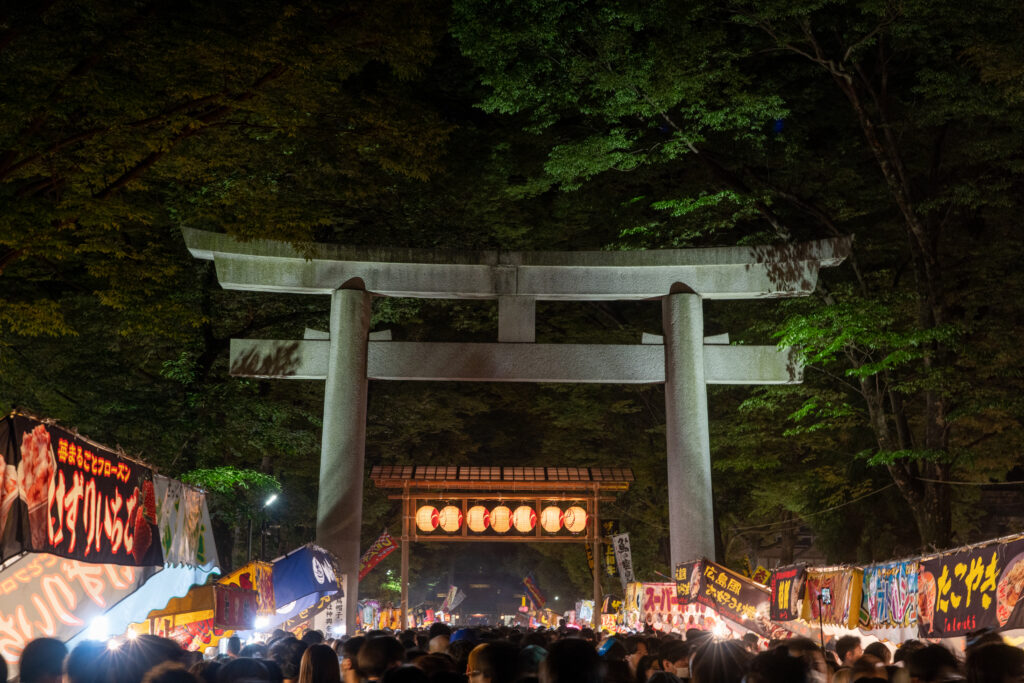
Kurayami Matsuri Festival held at Okunitama Shrine
Originally, Matsuri (festivals) at shrines were events to express gratitude and prayers to the gods.
Large-scale Matsuri, such as the annual “Reitaisai” (generally the most important festival of a shrine), attract many people from within and outside the community to the shrine.
At these Matsuris, visitors can enjoy such events as the powerful Mikoshi (Vehicle of the divine spirit) parade and the parade of Dashi (Traditional wheeled float used in Japanese festivals), as well as the food stalls.
Among the festivals held throughout Japan, Kyoto’s Gion Matsuri (Gion Festival) held in July at Yasaka Shrine, Osaka’s Tenjin Matsuri (Tenjin Festival) held in July at Osaka Tenmangu Shrine, and Tokyo’s Kanda Matsuri (Kanda Festival) held in May at Kanda Shrine are considered the three largest festivals in Japan due to their long history and large scale. (Note that the main festival of the Kanda Matsuri (Kanda Festival) is held in odd-numbered years.)

